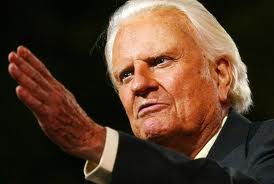Passing the evangelical torch: Embracing the diversity of the new Christian world
Evangelical leaders of previous generations are in the process of passing the torch to younger leaders, for whom there are at least 10 fresh challenges. We’ve considered the challenges of Navigating Newfound Authority, Waging a New Bloodless Revolution, Overcoming Spiritual Superficiality; Creating Culture, Returning to Virtue, Bridging to Everyday Relevance, Resisting the Seduction of the New Social Gospel and Learning to Communicate Again. Now this challenge:
Embracing the Diversity of the New Christian World
Ask Americans what faith group they belong to and the vast majority—some 75 to 85 percent—will say they are Christian. About 37 percent will say they are evangelical or born again. Non-Christian religions (including Judaism, Buddhism, Islam, and Hinduism), collectively make up about 4% to 5% of the adult population. The rest say they have no religious belief or affiliation. Those statistics probably surprise most people because of the efforts of media and others to be sensitive to the increasing number of non-Americans among us and to the vast diversity of faiths that they bring with them.
(A Barna poll, by the way, showed that born-again Christians are increasingly well-educated, well-off and from a variety of cultural backgrounds, perhaps most surprisingly, Asian-American.)
The greatest threat to American Christianity is not other faith groups but faithlessness, spiritual vacuity. Although individuals identify themselves as more Christian than non-Christian, the sad reality is that for far too many of those supposedly adherents, there is no “there” there.
While in the U.S. evangelicalism is the only part of Christianity that is growing, it is growing slowly and that growth is among independent groups, not denominations (for the most part), while a conservative strain of Christianity—both Protestant and Catholic—is surging in Africa, Latin America and Asia.
Orthodox or evangelicals Christian believers in America will increasingly find their strongest and most numerous allies and spiritual partners not in the western mainline Christian denominations, but in the conservative Christian—both Protestant and Catholic—in the global south.
Philip Jenkins, Distinguished Professor of History and Religious Studies at Penn State and author of The Next Christendom (2002) wrote about the shifts in the global church:
If we look beyond the liberal West, we see that another Christian revolution, quite different from the one being called for in affluent American suburbs and upscale urban parishes, is already in progress. Worldwide, Christianity is actually moving toward supernaturalism and neo-orthodoxy, and in many ways toward the ancient world view expressed in the New Testament: a vision of Jesus as the embodiment of divine power, who overcomes the evil forces that inflict calamity and sickness upon the human race. In the global South (the areas that we often think of primarily as the Third World) huge and growing Christian populations—currently 480 million in Latin America, 360 million in Africa, and 313 million in Asia, compared with 260 million in North America—now make up what the Catholic scholar Walbert Buhlmann has called the Third Church, a form of Christianity as distinct as Protestantism or Orthodoxy, and one that is likely to become dominant in the faith. The revolution taking place in Africa, Asia, and Latin America is far more sweeping in its implications than any current shifts in North American religion, whether Catholic or Protestant.
The growth in Africa has been relentless. In 1900 Africa had just 10 million Christians out of a continental population of 107 million—about nine percent. Today the Christian total stands at 360 million out of 784 million, or 46 percent. And that percentage is likely to continue rising, because Christian African countries have some of the world’s most dramatic rates of population growth. Meanwhile, the advanced industrial countries are experiencing a dramatic birth dearth. Within the next twenty-five years the population of the world’s Christians is expected to grow to 2.6 billion (making Christianity by far the world’s largest faith). By 2025, 50 percent of the Christian population will be in Africa and Latin America, and another 17 percent will be in Asia. Those proportions will grow steadily. By about 2050 the United States will still have the largest single contingent of Christians, but all the other leading nations will be Southern: Mexico, Brazil, Nigeria, the Democratic Republic of the Congo, Ethiopia, and the Philippines. By then the proportion of non-Latino whites among the world’s Christians will have fallen to perhaps one in five.
———
Perhaps the most remarkable point [is that the trends have] registered so little on the consciousness of even well-informed Northern observers. What, after all, do most Americans know about the distribution of Christians worldwide? I suspect that most see Christianity very much as it was a century ago—a predominantly European and North American faith.
As the media have striven in recent years to present Islam in a more sympathetic light, they have tended to suggest that Islam, not Christianity, is the rising faith of Africa and Asia, the authentic or default religion of the world’s huddled masses. But Christianity is not only surviving in the global South, it is enjoying a radical revival, a return to scriptural roots. We are living in revolutionary times.
Timothy Keller of Redeemer Presbyterian in New York writes:
The demographic center of Christian gravity has already shifted from the West to Asia, Latin America, and Africa. The rising urban churches of China may be particularly influential in the future. But the West still has the educational institutions, the money, and a great deal of power. What should the relationship of the older Western churches be to the new non-Western church? How can we use our assets to serve them in ways that are not paternalistic? How can we learn from them in more than perfunctory ways?
Evangelical leaders of the next generation will be looking at a very different evangelical church, likely to be more diverse and stagnant in America and soaring in the global south. Their challenge will be to grasp new opportunities to serve and support the growing yet needy church communities, and to learn all they can from the fresh new perspectives from vibrant New Testament expressions of the Body of Christ around the world.









